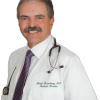(RxWiki News) Sleep apnea can be dangerous, but some patients don't adhere to treatment involving breathing masks. Recent research shows that a surgically implanted device may work better for those patients.
The device stimulates a nerve to keep the upper airways open. Participants in the study received the device, and researchers followed up for one year.
These researchers found that the device significantly improved patients' sleep apnea and increased oxygen levels in the blood.
The authors of this study suggested that the device could treat sleep apnea in patients who have trouble adhering to other treatments.
"If you have sleep apnea, talk to your doctor about treatment options."
Patrick Strollo, Jr., MD, of the University of Pittsburgh Medical Center, led this study.
Sleep apnea is a condition in which a person briefly stops breathing during sleep. According to the authors of this study, moderate to severe sleep apnea can result in sleepiness, insulin resistance and even death.
Continuous positive airway pressure, or CPAP, is one of the most common treatments for sleep apnea. CPAP treatment involves wearing a mask that delivers constant air pressure while sleeping to keep airways open. However, the effectiveness of CPAP treatment depends on whether the patient decides to use the mask.
This study tested the effectiveness of upper-airway stimulation using a device that was surgically implanted in patients.
The researchers recruited 126 participants with sleep apnea who previously had trouble adhering to CPAP therapy. Most of the patients were men and the average age of the participants was 54.5 years old.
Each of the participants underwent surgery to have the upper-airway stimulation system implanted. The device used stimulation of a nerve to help open the upper airway. A total of 95 percent of the patients were discharged either the day of or the day after their surgeries.
The researchers followed up with patients periodically for 12 months. They evaluated the participants on the severity of their apnea, blood oxygen levels during sleep, sleepiness and quality of life.
By the end of the 12 month period, the average instances of pauses in breathing and shallow breathing had decreased 68 percent from baseline.
Instances of low blood oxygen had decreased 70 percent from 25.4 to 7.4 events per hour.
A total of 83 of the 126 participants experienced at least a 50 percent reduction in the frequency of apnea events.
After the last 12-month visit, 23 patients were assigned to a therapy-withdrawal group and had their device turned off for seven days. Among those participants, instances of breathing pauses and shallow breathing increased significantly after one week of withdrawal. Two participants experienced significant discomfort that required repositioning of the device.
Additionally, 40 percent of the participants said they felt some discomfort due to the stimulation. A total of 18 percent of the patients reported tongue weakness and 21 percent reported tongue soreness.
These researchers concluded that participants using the device experienced a reduction in the severity of sleep apnea.
They suggested that sleep apnea patients who had not adhered to CPAP treatment may benefit from upper-airway stimulation.
"The device mentioned is one of several being developed by different companies for sleep apnea," said Robert Rosenberg, DO, of The Sleep Disorders Centers of Prescott Valley and Flagstaff in Arizona.
"They are referred to as HGNS (hypoglossal nerve stimulators). They stimulate the hypoglossal nerve in phase with inspiration. This results in activation of upper airway dilating muscles that oppose the collapse that occurs with sleep apnea. Although not yet approved by the FDA, preliminary studies such as this indicate they may be a viable alternative for those who cannot tolerate CPAP," he said.
This study was published in the New England Journal of Medicine on January 8.
The research was supported by Inspire Medical Systems, the maker of the device. The authors disclosed no conflicts of interest.







